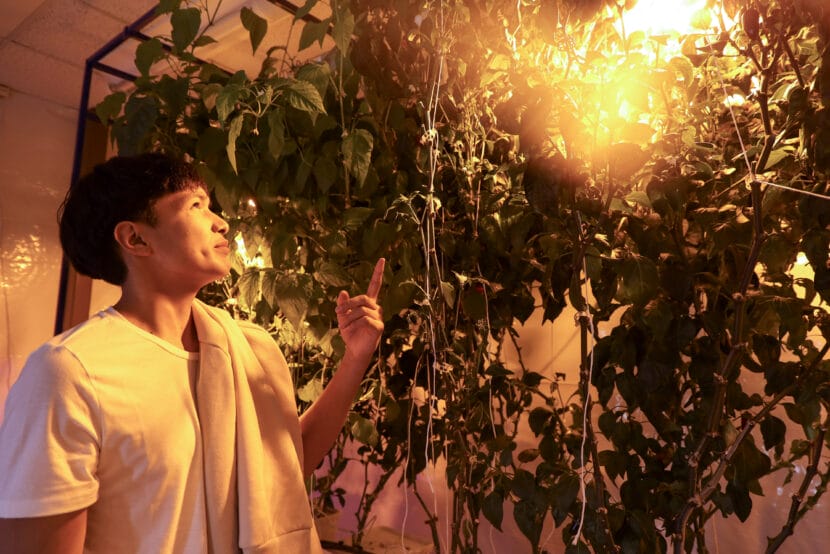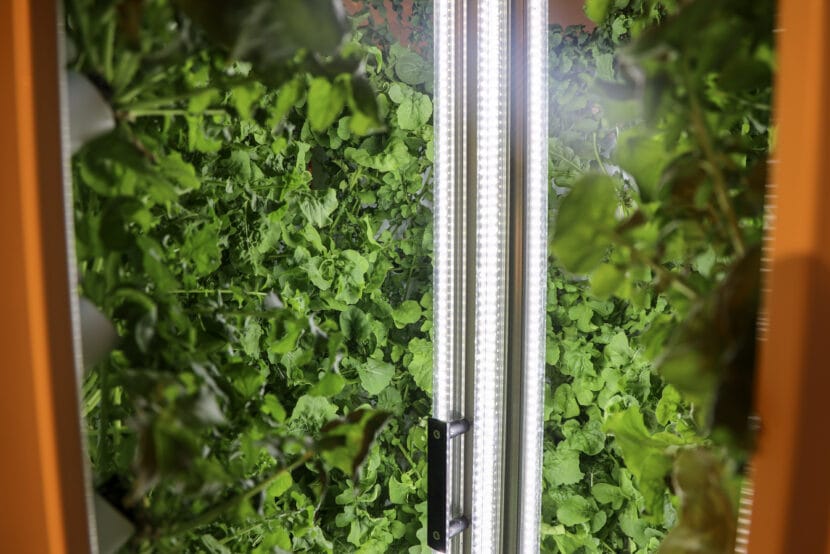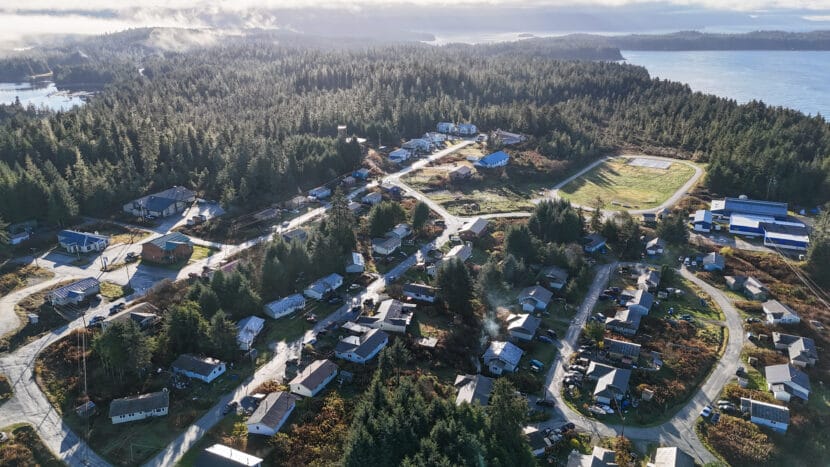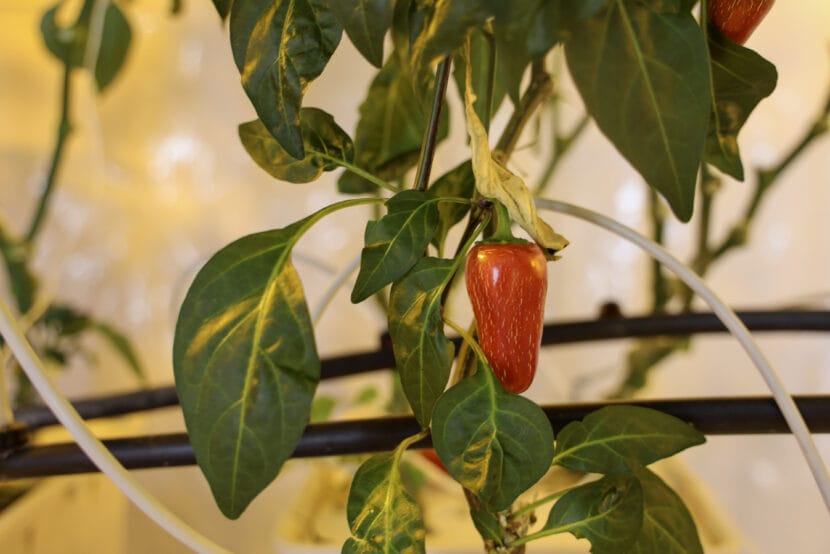
In the remote Southeast Alaska village of Angoon, high school students are learning how to grow their own produce using hydroponic technology.
The classroom facility gives students a hands-on learning experience and increases food sovereignty in a community of about 300 people, where fresh vegetables are hard to come by.
In the classroom, the desks and whiteboards you might expect to see are missing. Instead, there are vines suspended from the ceiling and foliage peeking out from tall white towers that look like they belong on a spaceship. The room is humid and the plants bask in warm yellow light.

High schoolers have spent the past few years building a mini-farm inside this ordinary classroom. And, they say the food they grow here is better than anything else they can get in town.
“It tastes better,” said Cody Pitka, a junior at the high school. He tended to the plants all summer long and continued to check in on them throughout the school year.
“It means a lot to me and like just being able to come here and help with the community and try to get other people to come in and help,” he said.

Angoon is on Admiralty Island, where it rains constantly and sunshine is a rarity in the winter.
Most of the produce in the village is flown in or brought in on a barge. A lot of residents rely on traditional harvesting to fill their freezers. But, climate change is disrupting land and water resources, making some subsistence foods less abundant or harder to find.
This facility is a way for the students — and community — to have more control over the food that they eat.
Lisa Kooshesh-Booth, a junior, said growing food here allows her to provide for her community in a brand-new way.
“Because we know where it came from and how we grew it and how we processed it,” she said.

Things that are usually hard to grow in Southeast Alaska — like peppers, tomatoes, basil and lettuce — are abundant in the classroom. That’s because of the hydroponics facility’s technology, which allows vegetables to grow year-round. There are boxes and pods where the plants suck up nutrient-rich water and grow under LED lamps.
The facility was paid for using a federal education grant. Its purpose is to teach students the basics of cultivation and food sustainability. The result of those lessons is the fresh produce they share with their community.
“It’s not just the hydroponics as a means of getting the food, but also it’s giving the kids a feeling of empowerment,” said Frank Coenraad, a counselor at the school who helped develop the program three years ago.
Coenraad said before the program, fresh vegetables were hard to come by in the village. Now, students get to enjoy the produce every day. And, once students get their share of the harvest, the rest goes to elders and anyone else in the community who wants some. It’s all free.
Pitka said that’s his favorite part.
“Being able to help the community out with vegetables, like fresh vegetables, but they know where it came from,” he said.
Now, the small classroom-size facility can’t support the entire village, and startup costs for hydroponic farms can be high, especially for remote locations like Angoon. But, Coenraad said the small classroom facility is a first step toward a bigger goal of food sovereignty.
“To have fresh vegetables is just so important for healthy living, and well-being and the kids are also feeling really good about themselves because they’re growing it,” he said.
Coenraad said right now students can get involved by taking the program as an extracurricular or when it’s integrated into other classes. But, next semester they plan to start a class solely dedicated to teaching students the basics of hydroponics and food sovereignty.